Abstract
Copper in bile has been shown by electrophoresis to occur neither as free ions nor complexed to protein but to be associated with a component of the micellar complexes of bile. Solvent fractionation studies suggest that the bile salt components of the lecithin-bile salt complexes are the active binding agents. The effects of specific bile salts on the behaviour of copper during electrophoresis supports this possibility.
The relationship of certain bile salts to the excretion of copper in man during the time that an external biliary fistula was functioning and to the intestinal absorption of copper in the rat was found to confirm this concept.
The results show that copper in bile is associated with taurochenodeoxycholate and suggest an explanation for the elevated tissue copper levels found in Wilson's disease.
Full text
PDF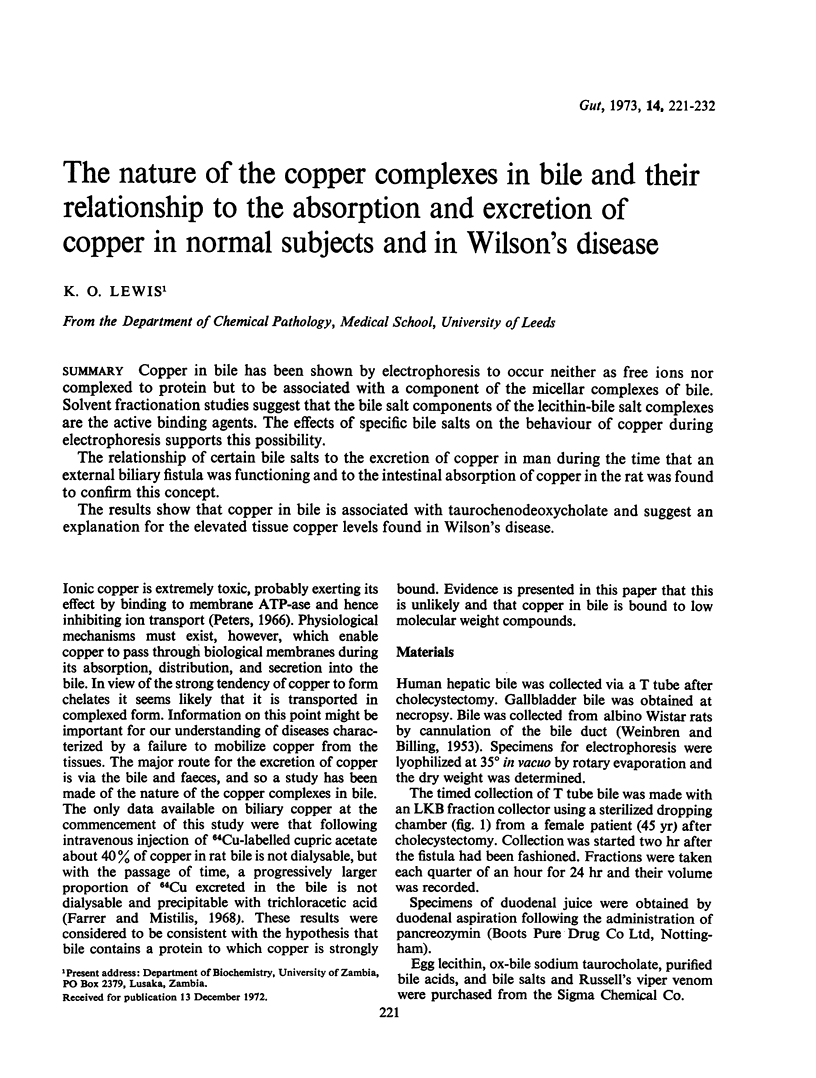
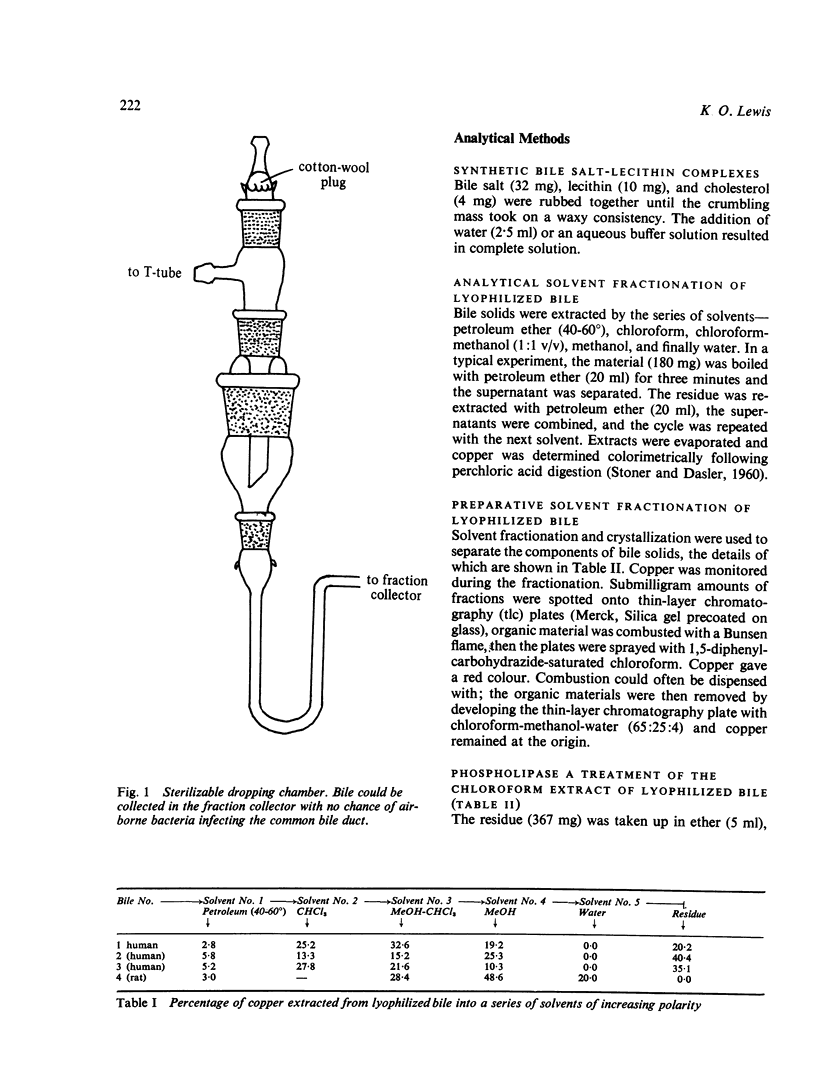
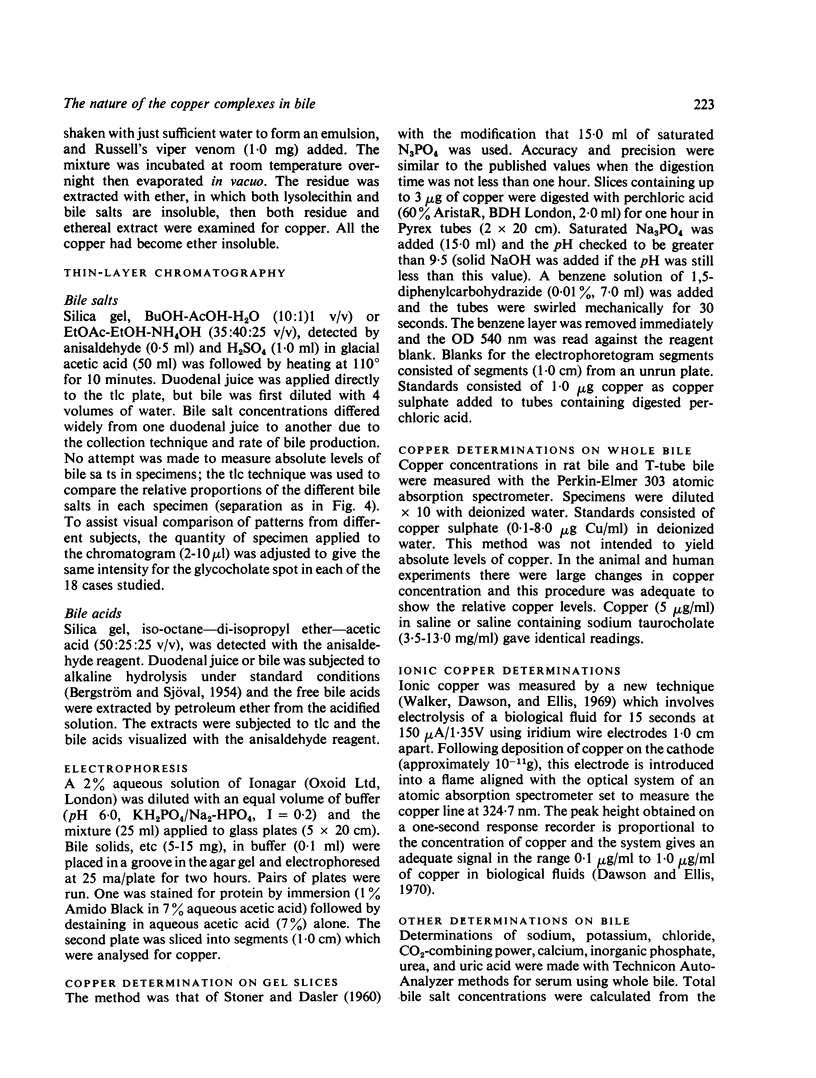
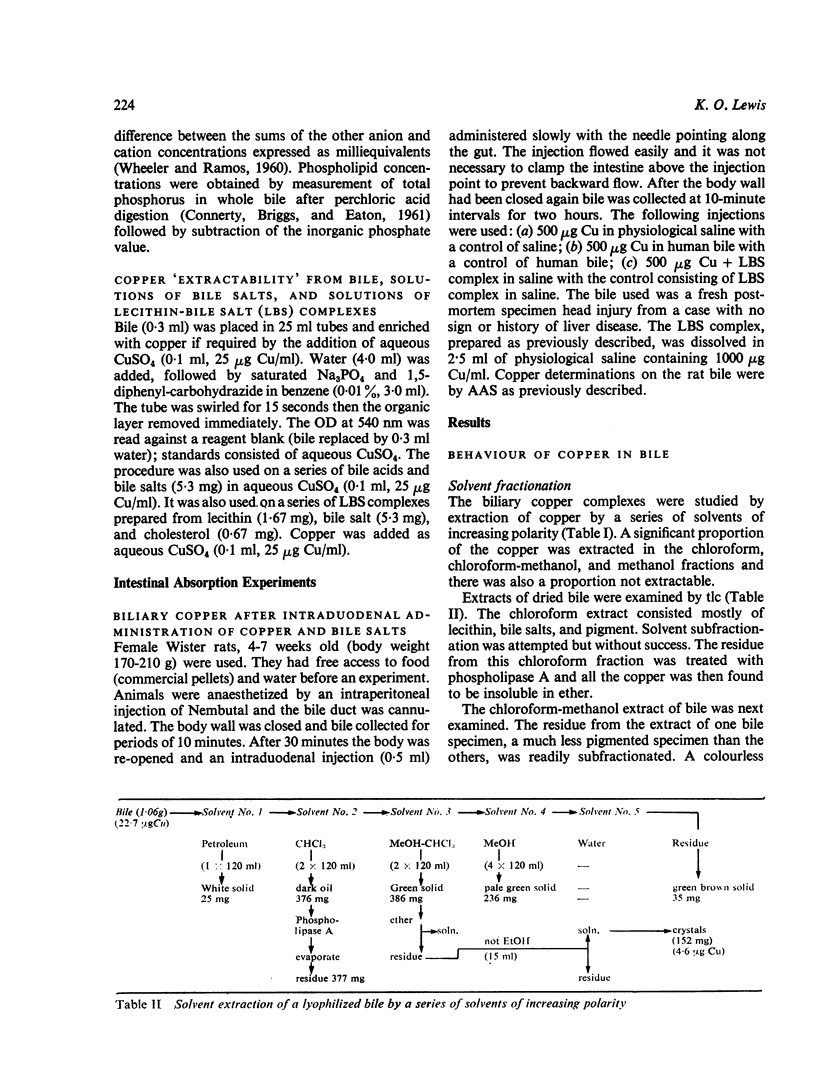
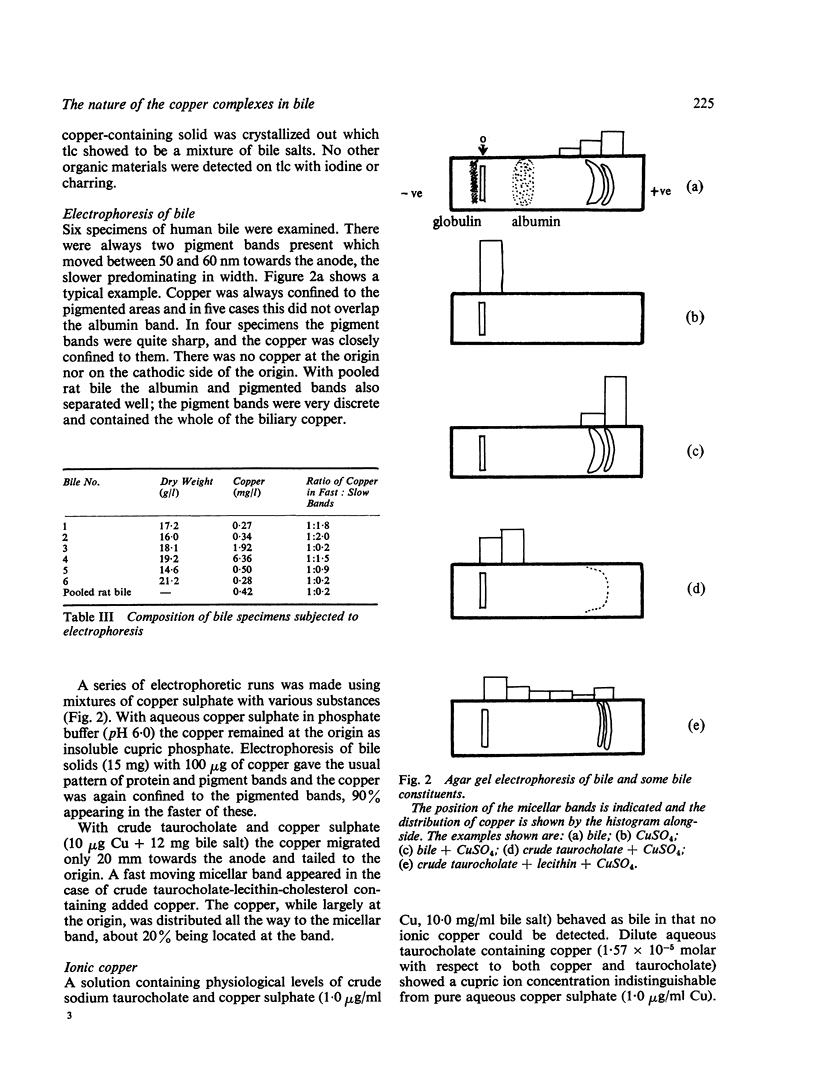
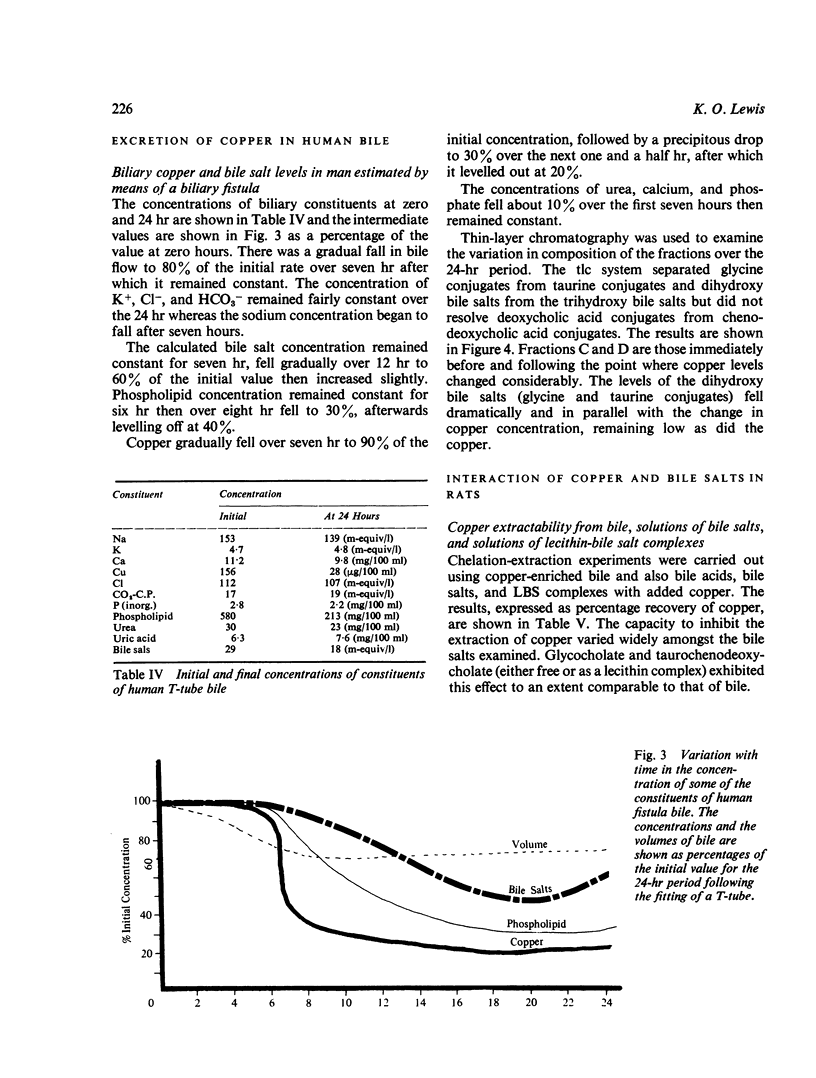
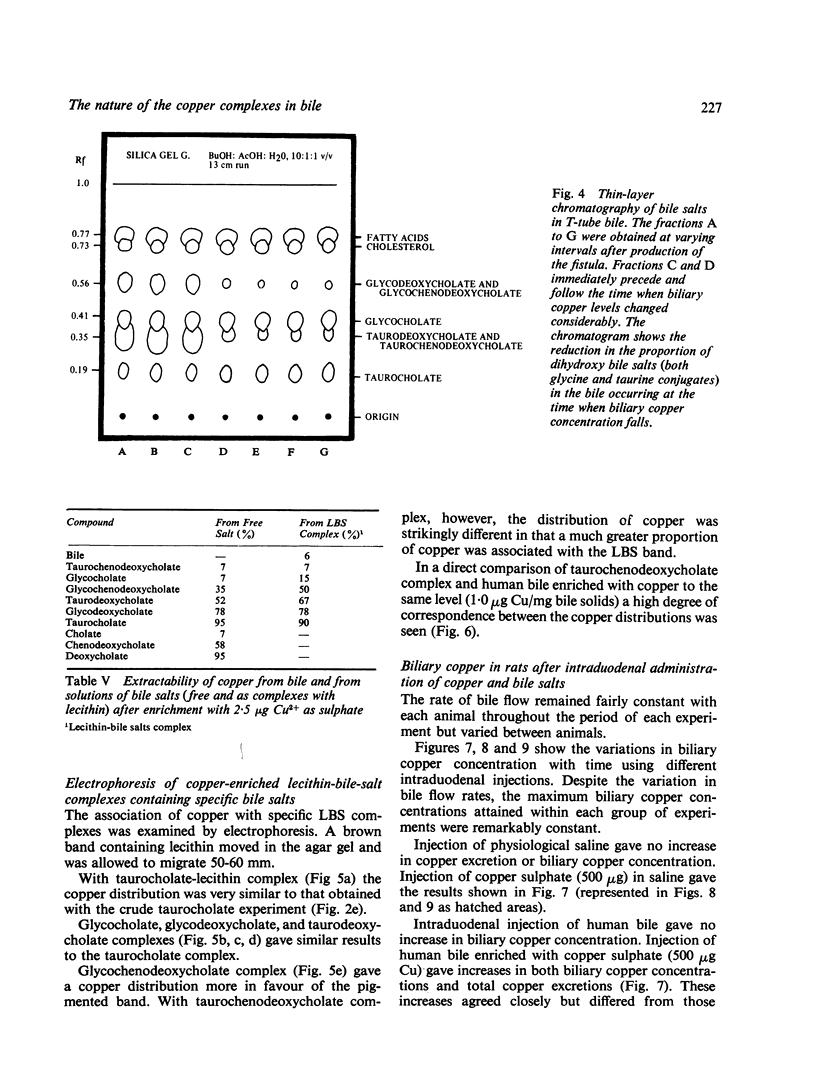
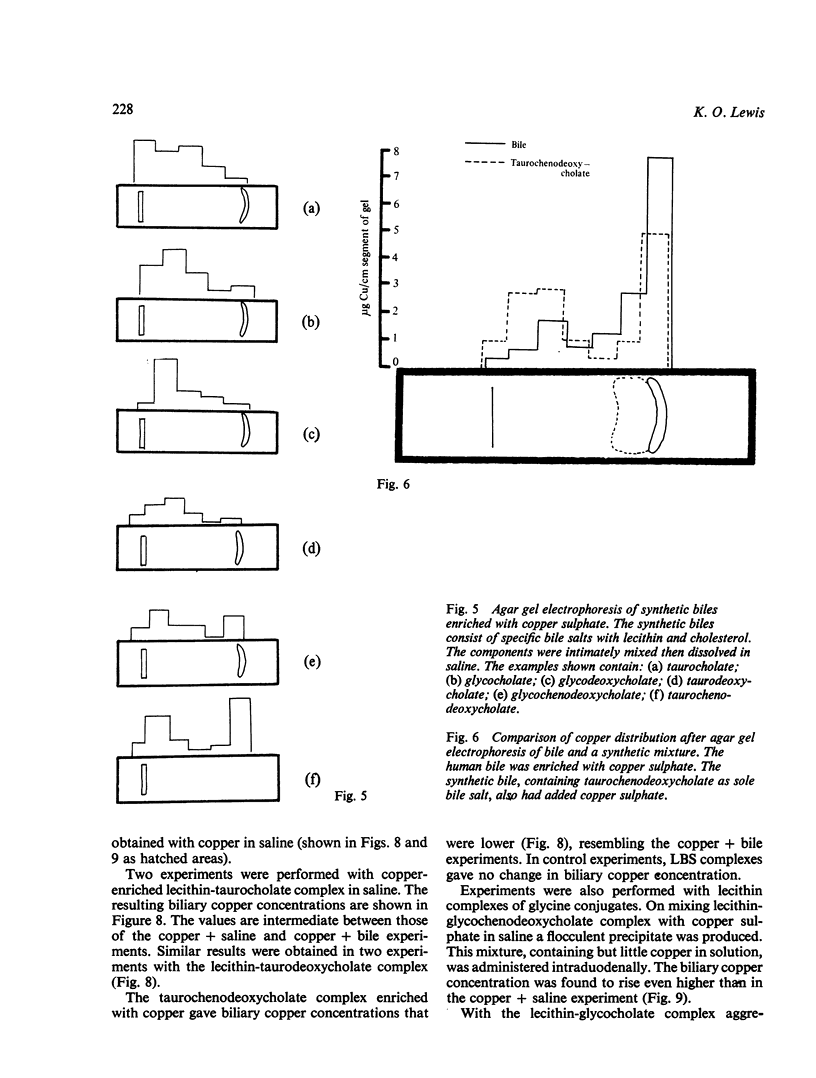
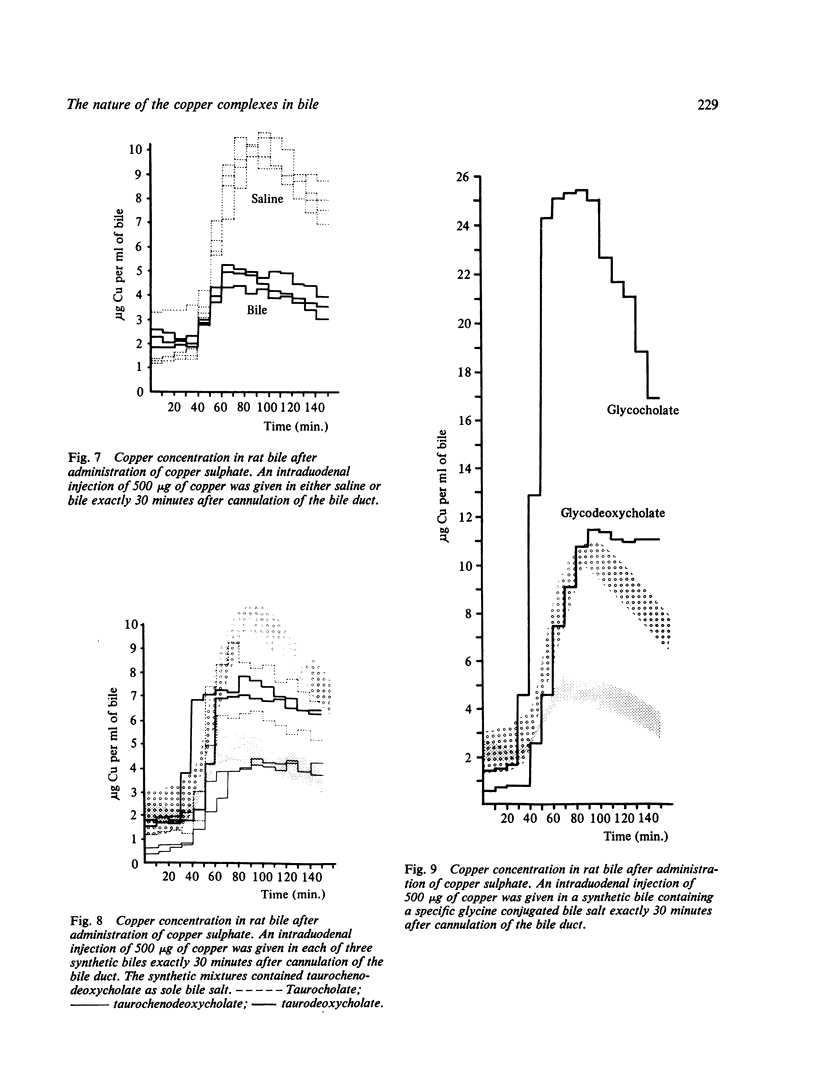
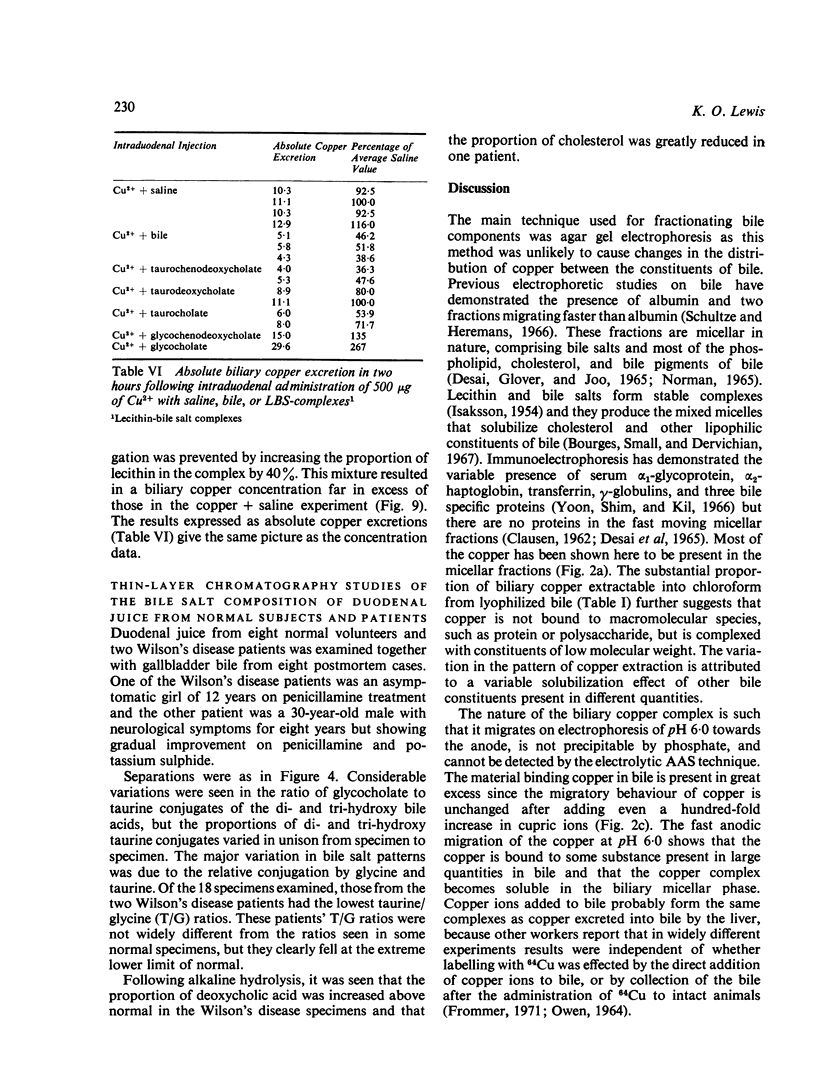
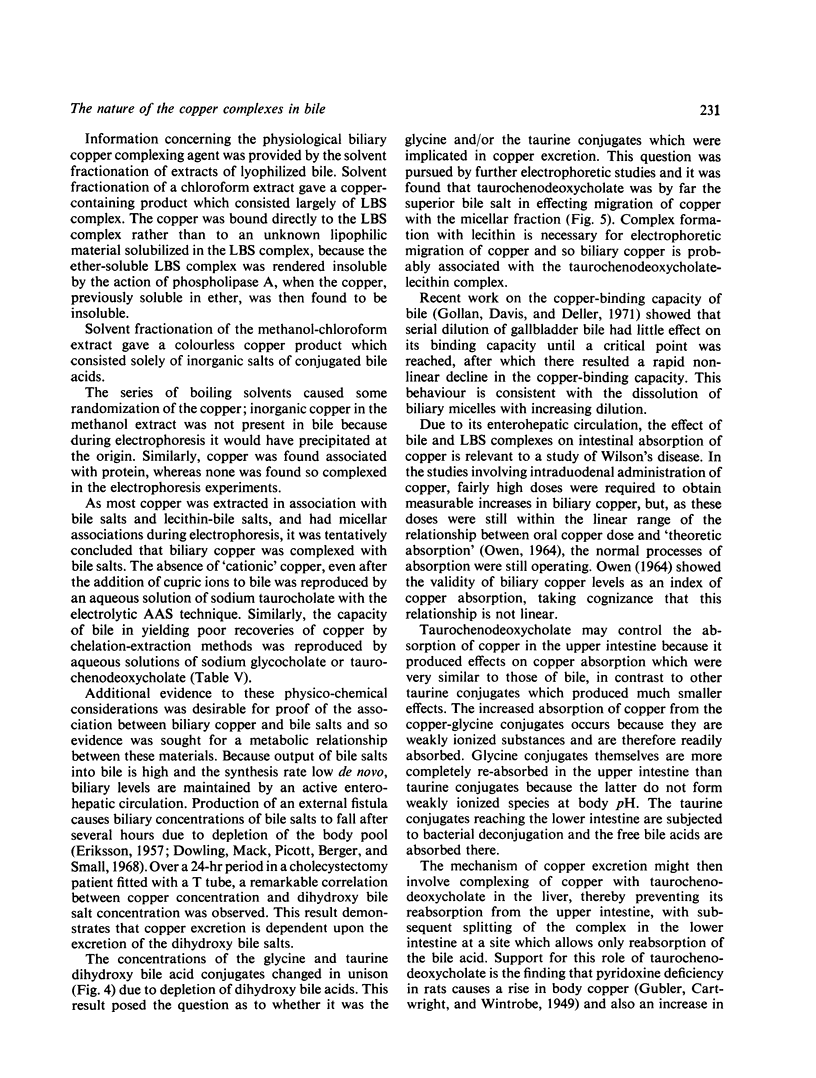
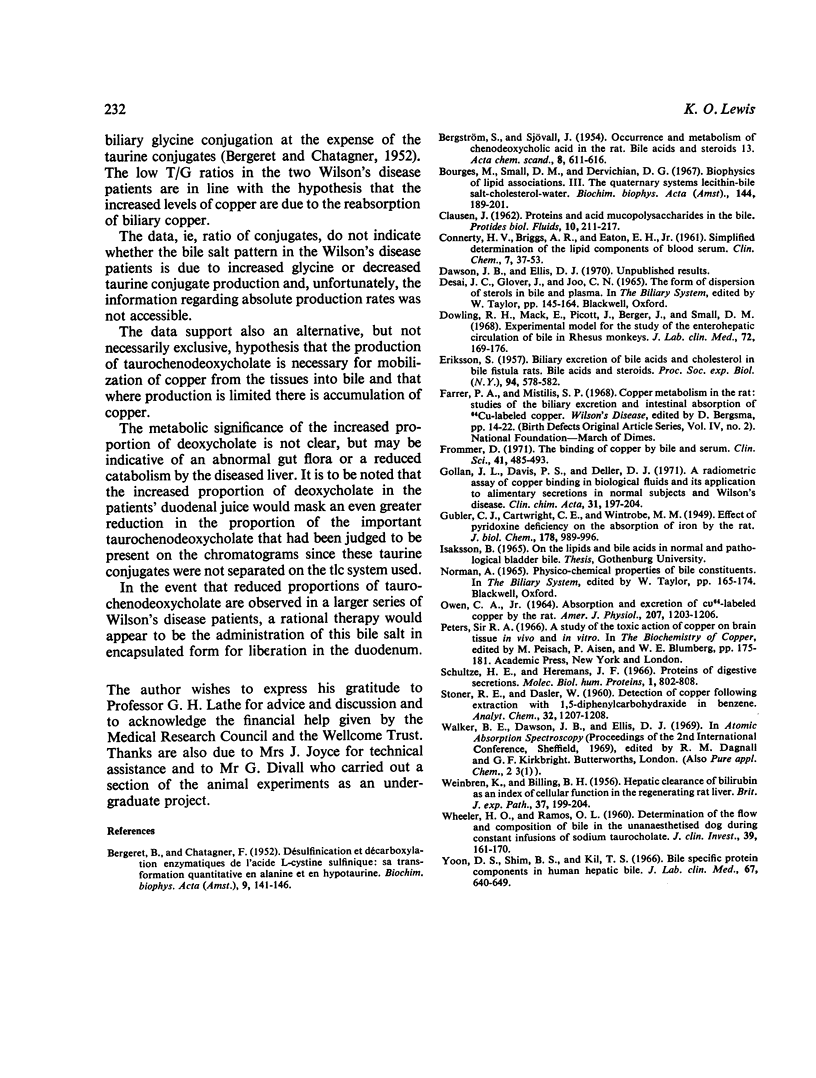
Selected References
These references are in PubMed. This may not be the complete list of references from this article.
- BERGERET B., CHATAGNER F. Désulfinication et décarboxylation enzymatiques de l'acide L-cystéine-sulfinique: sa transformation quantitative en alanine et en hypotaurine. Biochim Biophys Acta. 1952;9(2):141–146. doi: 10.1016/0006-3002(52)90139-x. [DOI] [PubMed] [Google Scholar]
- Bourgès M., Small D. M., Dervichian D. G. Biophysics of lipid associations. 3. The quaternary systems lecithin-bile salt-cholesterol-water. Biochim Biophys Acta. 1967 Oct 2;144(2):189–201. [PubMed] [Google Scholar]
- CONNERTY H. V., BRIGGS A. R., EATON E. H., Jr Simplified determination of the lipid components of blood serum. Clin Chem. 1961 Feb;7:37–53. [PubMed] [Google Scholar]
- Dowling R. H., Mack E., Picott J., Berger J., Small D. M. Experimental model for the study of the enterohepatic circulation of bile in rhesus monkeys. J Lab Clin Med. 1968 Jul;72(1):169–176. [PubMed] [Google Scholar]
- ERIKSSON S. Biliary excretion of bile acids and cholesterol in bile fistula rats; bile acids and steroids. Proc Soc Exp Biol Med. 1957 Mar;94(3):578–582. doi: 10.3181/00379727-94-23018. [DOI] [PubMed] [Google Scholar]
- Frommer D. The binding of copper by bile and serum. Clin Sci. 1971 Dec;41(6):485–493. doi: 10.1042/cs0410485. [DOI] [PubMed] [Google Scholar]
- Gollan J. L., Davis P. S., Deller D. J. A radiometric assay of copper binding in biological fluids and its application to alimentary secretions in normal subjects and Wilson's disease. Clin Chim Acta. 1971 Jan;31(1):197–204. doi: 10.1016/0009-8981(71)90378-0. [DOI] [PubMed] [Google Scholar]
- OWEN C. A., Jr ABSORPTION AND EXCRETION OF CU64-LABELED COPPER BY THE RAT. Am J Physiol. 1964 Dec;207:1203–1206. doi: 10.1152/ajplegacy.1964.207.6.1203. [DOI] [PubMed] [Google Scholar]
- WEINBREN K., BILLING B. H. Hepatic clearance of bilirubin as an index of cellular function in the regenerating rat liver. Br J Exp Pathol. 1956 Apr;37(2):199–204. [PMC free article] [PubMed] [Google Scholar]
- Wheeler H. O., Ramos O. L. DETERMINANTS OF THE FLOW AND COMPOSITION OF BILE IN THE UNANESTHETIZED DOG DURING CONSTANT INFUSIONS OF SODIUM TAUROCHOLATE. J Clin Invest. 1960 Jan;39(1):161–170. doi: 10.1172/JCI104015. [DOI] [PMC free article] [PubMed] [Google Scholar]


